Discover 11 hidden attractions, cool sights, and unusual things to do in Heerlen (Netherlands). Don't miss out on these must-see attractions: Kasteel Hoensbroek, Op de Vrouweheide, and Weltermolen. Also, be sure to include Saint Bernard Church in your itinerary.
Below, you can find the list of the most amazing places you should visit in Heerlen (Limburg).
Table of Contents
Kasteel Hoensbroek
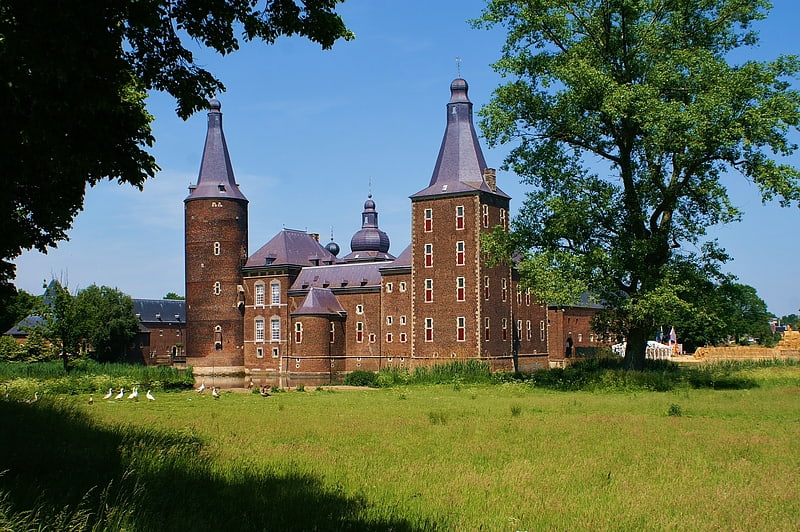
Large moated 13th-century castle museum. Hoensbroek Castle or Gebrook Castle is one of the largest castles in the Netherlands. It is situated in Hoensbroek, a town in the province of Limburg. This imposing watercastle is known as 'the most lordly stronghold between Rhine and Meuse'. The oldest part of the castle, notably the tall round tower, dates from around 1360, when it was built by Herman Hoen, though a predecessor to the castle had already existed in the swamp the castle was located in. This so-called motte-and-bailey dated from around 1225. In 1250 a fortified manor was built on the location of the present castle. Because of its important strategical location in the Duchy of Brabant, located along important trading routes to Maastricht, Aachen and Cologne, the castle was expanded in several phases, becoming the largest stronghold between the Meuse and the Rhine rivers. It contains at least 67 halls, rooms and living quarters.[1]
Address: Klinkertstraat 118, 6433 PB Hoensbroek
Op de Vrouweheide
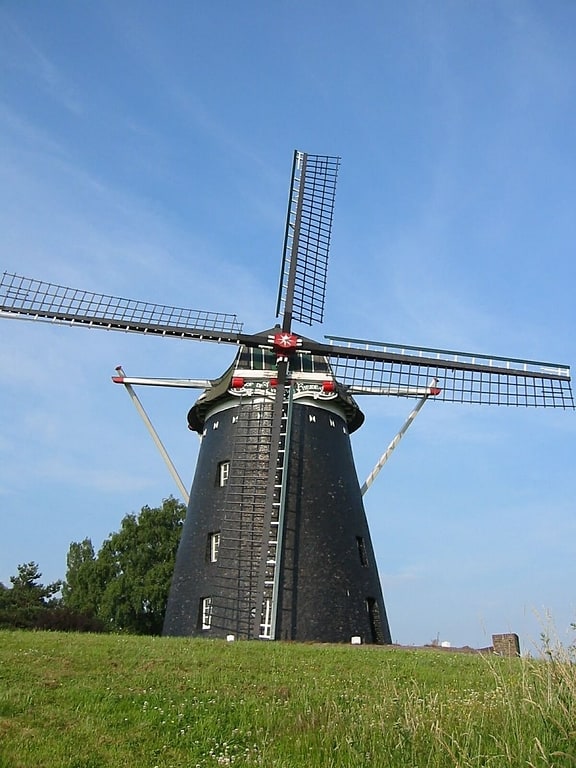
Mill in Voerendaal, Netherlands. Op de Vrouweheide is a windmill located on the Vrouwenheide just south of Ubachsberg, Voerendaal, in the Dutch province of Limburg. Build in 1858 as a tower mill, on an artificial hill, the windmill functioned as a gristmill. The mill is a national monument since 17 January 1967.[2]
Address: Heerlen, Vrouwenheide 1, 6367 JZ, Voerendaal
Weltermolen
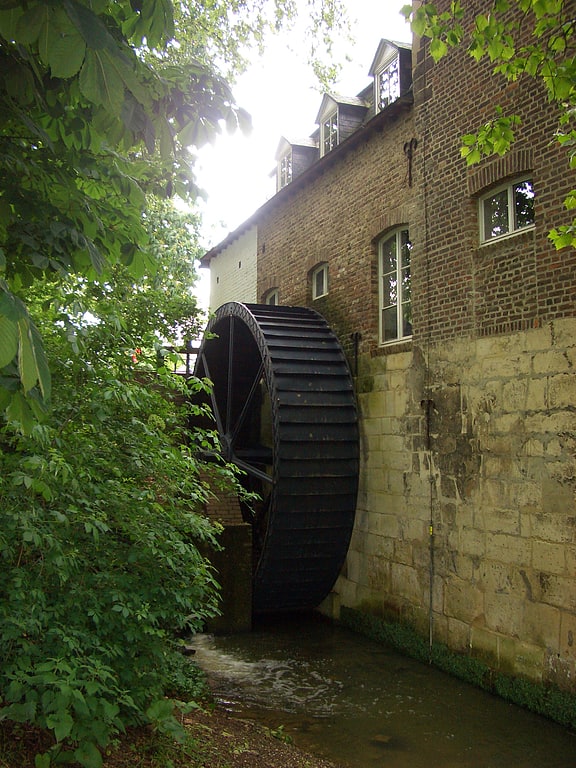
Water mill in Heerlen, Netherlands. The Weltermolen is a watermill located in Welten, Heerlen in the Netherlands. It is fed by the Geleenbeek, with some extra force created by a largely man-made pond.
The Weltermolen wasn't a watermill until the start of the 20th century.
During World War II (approximately 1943) the waterwheel was taken out of action and an electrical motor took over.
The mill was already mentioned in the 14th century and it has a strong connection with Huis Strijthagen (or Huis Strijthagen tot Welten).
The present day mill consists of a long shaped part of one floor under a Mansard roof, a tower and the mill. The tower has a weather vane shaped like a carp.
The mill was restored in 1982 and is open to the public on milling days.
This watermill is one of several located in the Geleenbeek stream.[3]
Saint Bernard Church
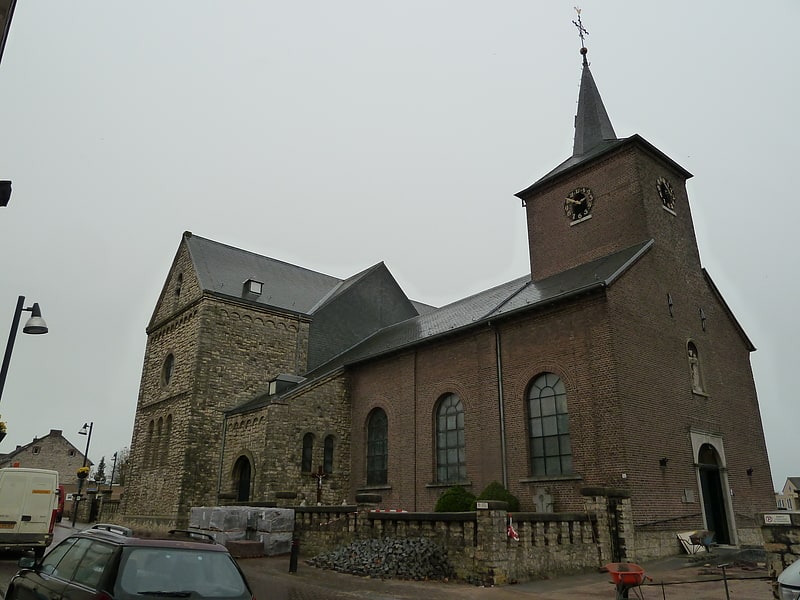
Also known as: Sint-Bernarduskerk
Church building in Voerendaal, Netherlands. The Saint Bernard Church is a Roman Catholic church building in Ubachsberg, Voerendaal, Netherlands. Patron saint for the church is Bernard of Clairvaux. The church is a national monument of the Netherlands.[4]
Address: Kerkstraat 30, 6367 JE Voerendaal
Ter Worm Castle
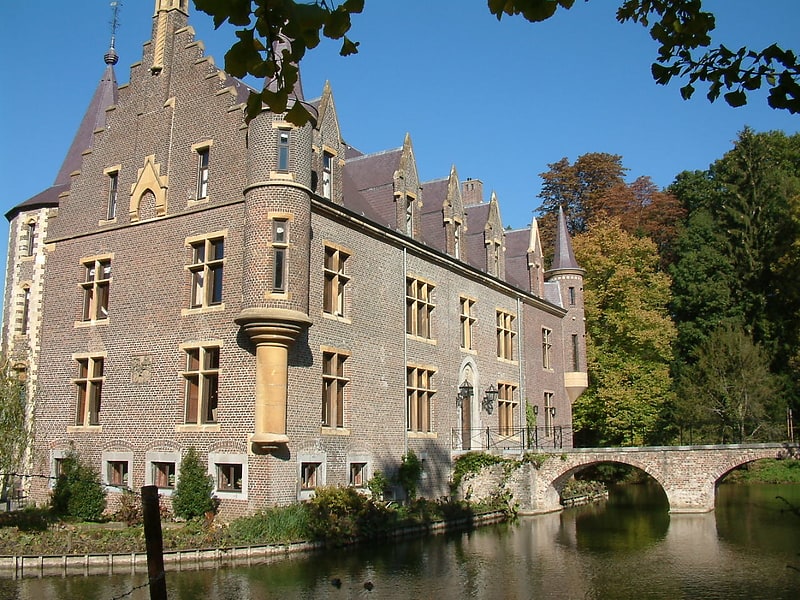
Also known as: Kasteel Ter Worm
Hotel in Heerlen, Netherlands. Ter Worm or Terworm Castle is a castle located in the municipality of Heerlen, Limburg Province, Netherlands. The castle is part of the Terworm estate.[5]
Oliemolen
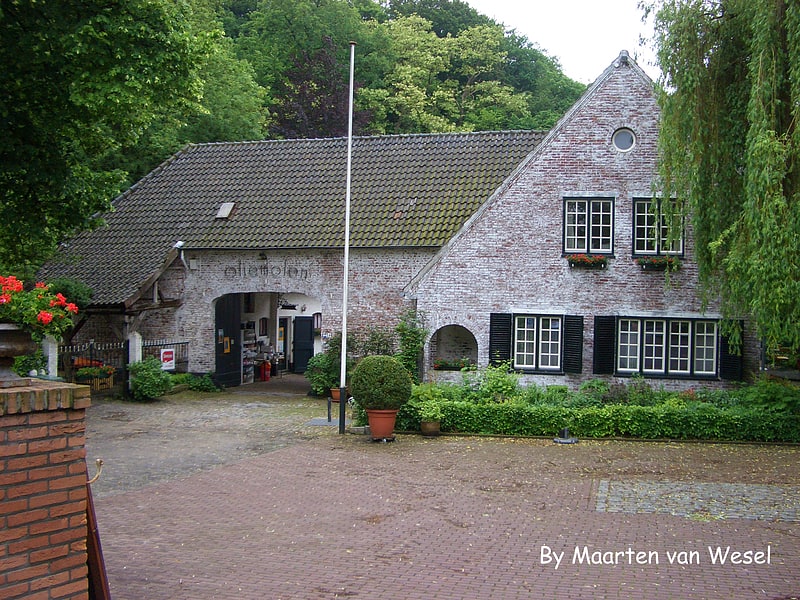
Foundation in Heerlen, Netherlands. The Oliemolen is a 16th-century watermill located at the foot of a steep hill in the Aambos, Heerlen in the Netherlands. The name already tells us much about its function, extracting oil, but this was not always the case as it first functioned as a volmolen. The mill is fed by the Caumerbeek.
A copy, dating to May 31, 1710, of the original deed exists, indicating the mill was founded on May 9, 1502, commissioned by the family Van Scheasberg. However, names of notables on the deed do not correlate with the people in those positions in the beginning of the 16th century; possibly a "0" was mistaken for a "6", making the founding year 1562.
In 1829 a license was granted for the mill to mill grain, which became the only use of the mill in 1904.[6]
Pancratiuskerk
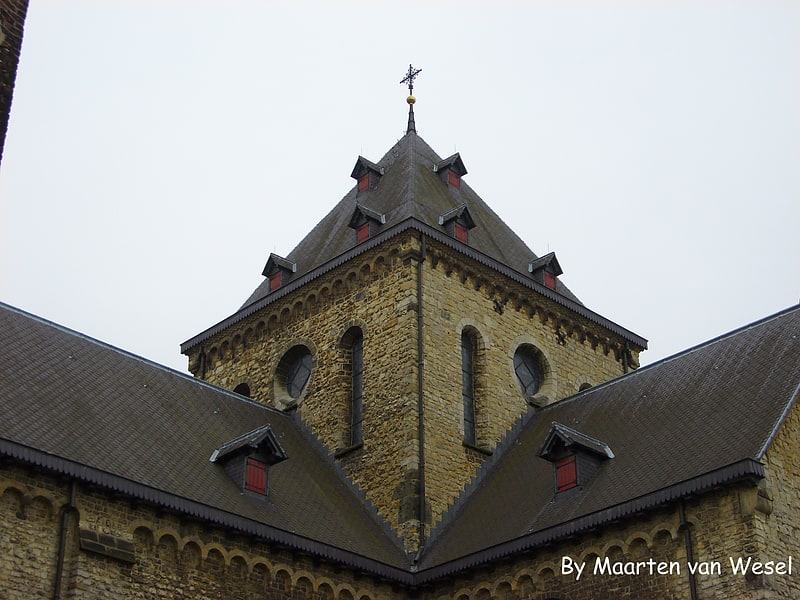
Catholic church in Heerlen, Netherlands. The Pancratiuskerk is a Roman Catholic church in Heerlen in the Netherlands.[7]
Address: Pancratiusplein 45, 6411 JZ Heerlen
Schelmentoren
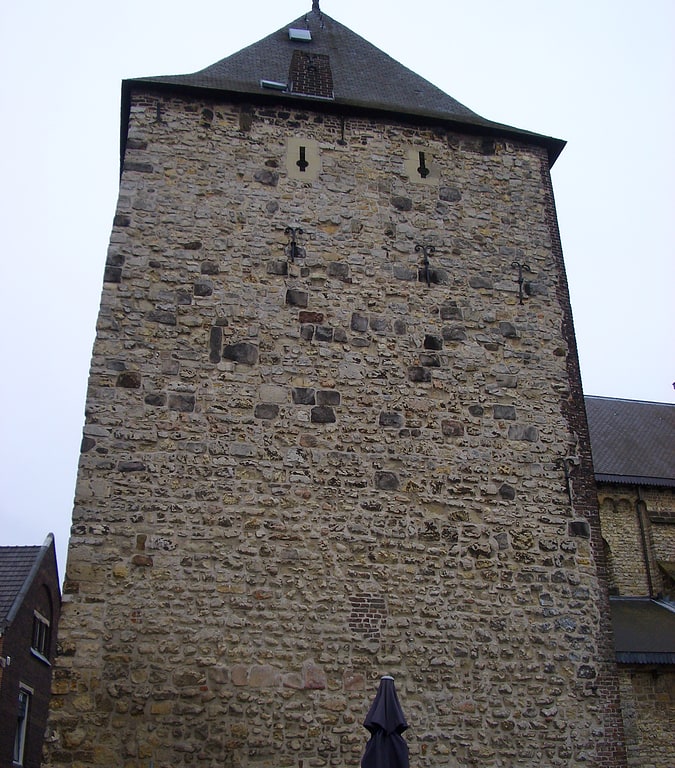
The Schelmentoren in Heerlen is a Medieval Building that has served as a defendable living tower for the Here van Are and their successors. As part of the Landsfort Herle, it served as a prison tower. It is believed to be built on command of Theoderich van Are. What is certain is that the building existed in the 12th century.[8]
Schunck
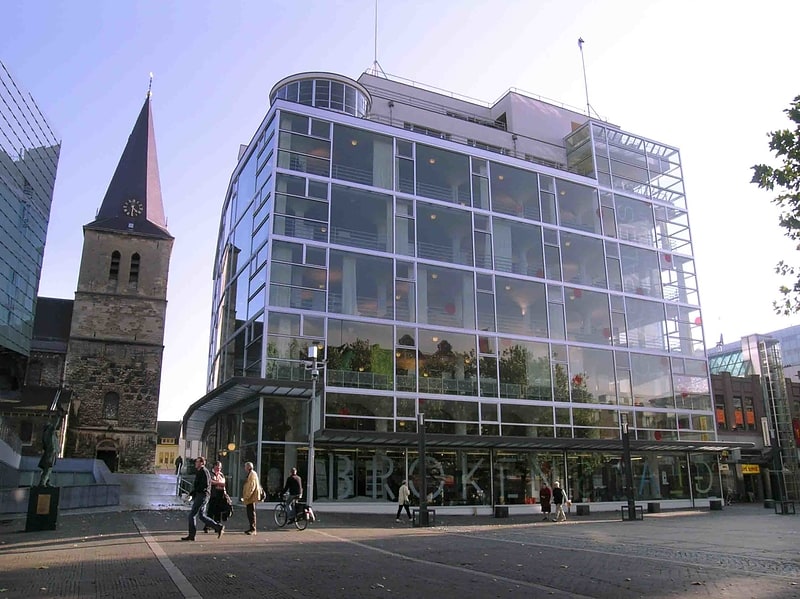
Schunck is the name of former fashion house and department store Firma Schunck in Heerlen, the Netherlands. It is also the name for the collection of buildings the firm has been housed in, one of which is known as the Glaspaleis, which is now a cultural centre and declared one of the 1000 most important buildings of the 20th century by the Union of International Architects.
The business grew from a small weaver's shop to the major department store in Heerlen and the innovating force in that town when coal mining declined. Over more than a century, it has been run by four consecutive generations of the family Schunck.
In current time, the Glaspaleis is a multidisciplinary cultural centre for contemporary art, architecture, music, dance and library named SCHUNCK*.[9]
Address: Bongerd 18, 6411 JM Heerlen
Royal Theater Heerlen
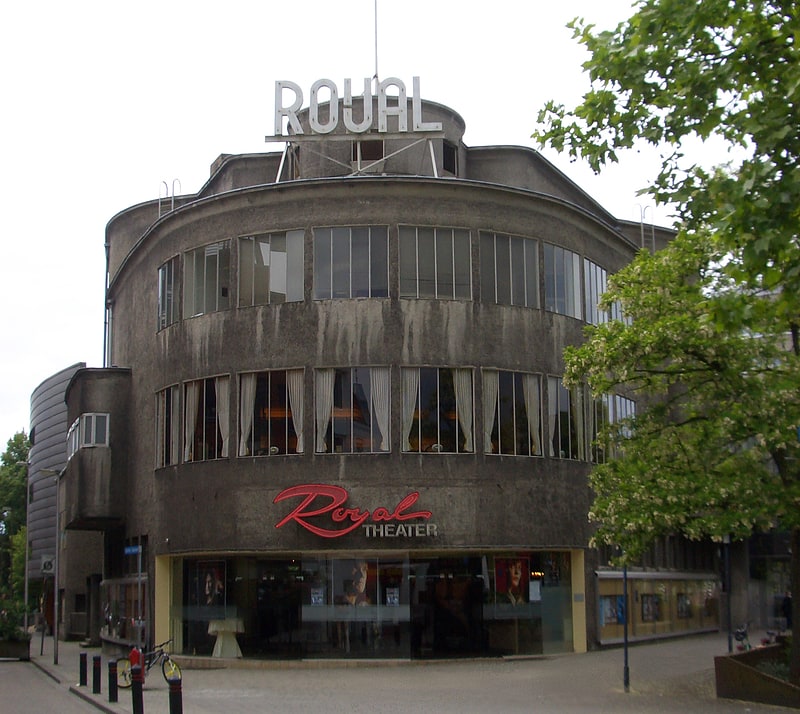
Also known as: Royal Theater
Building in Heerlen, Netherlands. Situated close to the Heerlen train station, this egg shaped building dates back to 1938 and was one of the oldest cinemas of the Netherlands. It was designed by Frits Peutz and J. Bongaerts. The buildings behind it are from a later date and include another building by Peutz.
It originally had 1180 seats (some sources say 814, but 1180 is more likely); this amount was later reduced by almost half for more leg room, leaving 743 seats).[10]
Landsfort Herle
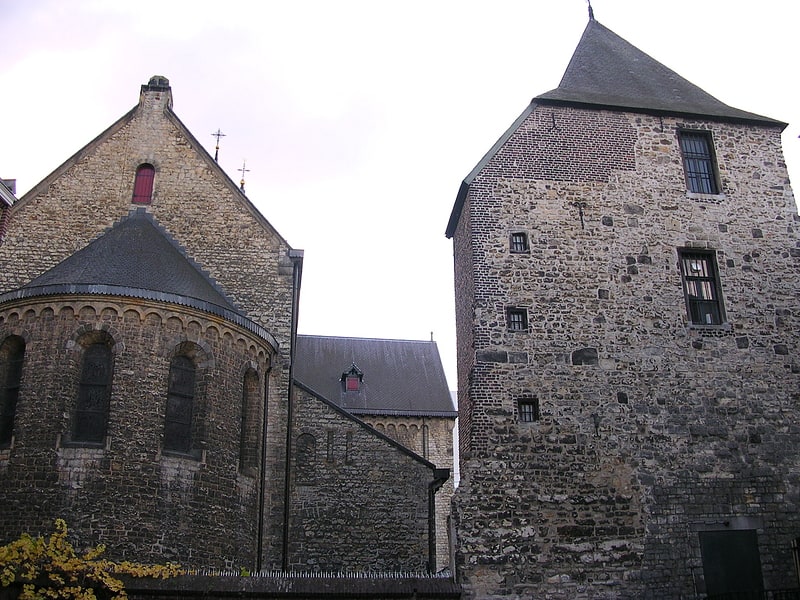
Landsfort Herle was a fortification with moat in, what now is, the centre of Heerlen, Netherlands, it was probably built by the counts van Ahr-Hochstaden The name Landsfort comes from the fact that the fortification come under the responsibility of the land. In the 13th century Heerlen, and thus also Landsfort Herle, come into the possession of the Dukes of Brabant, the Landsfort was built by the Dukes of Brabant in 1244.
The wall is believed to be one of the oldest still recognisable in the Netherlands, part is now being excavated.
A marquette of the fort was constructed from a map from 1787 found while the Pancratiuskerk was heavily reconstructed in the 1960s. The fort had three gates and had two towers (the bell tower of the church and the Schelmentoren, both with 2 metre thick walls).
In the roof of the church were little rooms for the inhabitants of Heerlen to take shelter in case of hostilities, unfortunately these rooms were destroyed when a, supposedly German, bomb hit the church at New Year's Eve 1944/1945.[11]